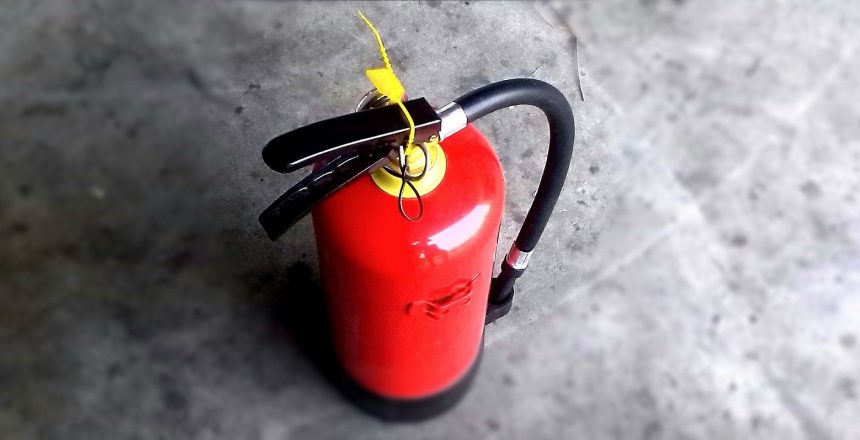- Our Services
Serve Notices
Calculators
- About Us
- Testimonials
- Resources
- FAQs
- Contact Us

Considering that most fires occur in residential dwellings, fire safety in blocks of flats that contain multiple dwellings is an incredibly important topic. A such, it is critical that all residents understand both how to prevent fires and how to escape if a fire were to occur in either their flat or building. Furthermore, residents should be aware of the legal responsibilities for fire safety which are an obligation of whoever is in charge of managing their building.
Blocks of flats are designed to provide some protection against fires occurring throughout the building. This is known as compartmentation and is achieved by dividing the building into fire-resisting compartments (the flats, communal areas, and stairwells, etc) using fire doors, floors, and walls of fire-resisting construction.
Compartmentation can prevent the spread of fire, smoke, and toxic gases and provides an adequate amount of time for residents to safely evacuate the building. This means that if a fire breaks out in one of the flats in your building, other flats and residents should be protected for a greater length of time.
One of the most important elements of achieving effective compartmentation is ensuring that doors are kept shut. Whether these are doors in communal areas, your front door, or doors within your flat, keeping them closed is vital to prevent the spread of fire and smoke. However, it is important that everyone within your flat knows where keys are kept if you plan on locking any doors.
The front door to your flat should be of a different structure to your internal doors, as it should be a fire door that meets current safety standards. It is therefore imperative that you do not replace or alter (by adding a cat flap or replacing the letterbox, for example) your front door without seeking permission or advice from your landlord, block manager, or Stone Carter if we are managing your building.
There are several checks that you can perform to ensure that your front door provides adequate fire protection standards:
In 2006, the Regulatory Reform (Fire Safety) Order 2005 (The FSO) came into force, which brought fire safety in common parts of blocks of flats up to standard with mainstream fire safety legislation. This occurred to address the heightened fire risk in blocks of flats and to afford the same level of safety that is found when living in a house.
This resulted in some blocks of flats seeing significant work to upgrade fire safety standards in the common areas to comply with this legislation, while other blocks were deemed satisfactory in their current state. These standards have also been embodied in current building regulations, which ensure that adequate fire safety provisions are incorporated in blocks of flats when they are constructed.
As part of the Fire Safety Regulatory Reform Order 2005, it was declared that from October 2006, every block of flats throughout England and Wales must have periodic fire risk assessments of the common parts of the building (this does not include inside the individual flats).
Fire risk assessments must be arranged for your building and kept under review by whoever is responsible for managing the property. This is usually the freeholder or block management company.
Every block of flats must have a person responsible for fire safety in the building under the Fire Safety Regulatory Reform Order. If you are unsure who this is, it is advisable to consult the freeholder to your building or block manager to find out who your point of contact is, should you have any questions regarding fire safety in your block.
During a fire risk assessment, the assessor will examine the front door to each flat together with the communal areas of the building such as the stairwells, entrance halls, corridors, and bin stores. They will be looking to see if the building and the people within and nearby are adequately protected from fire while making notes about any improvements that should be made.
A thorough fire safety assessment will determine the following:
The timeframe in which a fire risk assessment is reviewed will depend entirely on the requirements of your building, as there is no legal timeframe to comply with. However, it is recommended that low-rise blocks up to three storeys, built in the last 20 years have a review every two years. Whereas blocks that rise higher than three storeys or that are older than 20 years should have a review every year.
If the fire is within your flat
If there is fire or smoke inside your home but your escape route is not clear
If the fire is outside your flat but within your block or building
You are usually safer staying put and calling 999 to tell the fire brigade where you are and the best way to reach you. Purpose-built maisonettes or blocks of flats are built to give you some protection from fire. This means that walls and doors can hold back flames and smoke for 30-60 minutes.
Many blocks of flats have a stay-put policy unless the fire is within your flat. This is because If you try to leave you could get in the way of the fire service trying to tackle the blaze, become trapped, or inhale smoke.
For advice relating to your building, it is imperative that you contact the person responsible for fire safety in your building. This could be the freeholder, block management company, or a designated person from a Right to Manage or Resident Management Company.

Adam has worked in the property sector for 20+ years. He specialises in the ground rent and freehold reversion space, providing services to clients from private landlords to corporate investors. Freehold Sale launched In 2013 where Adam enjoyed success building and managing freehold portfolios with partner companies.